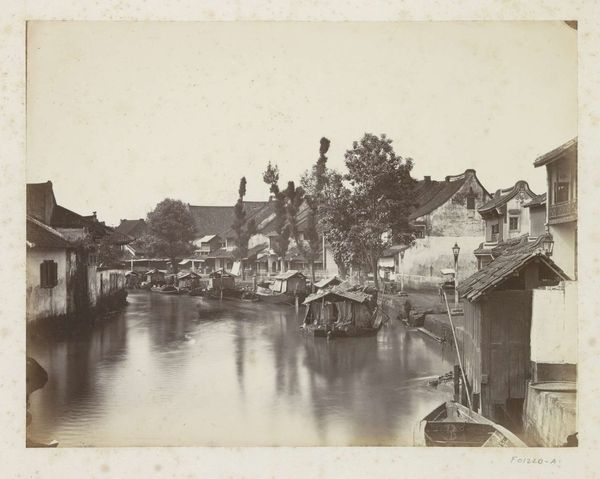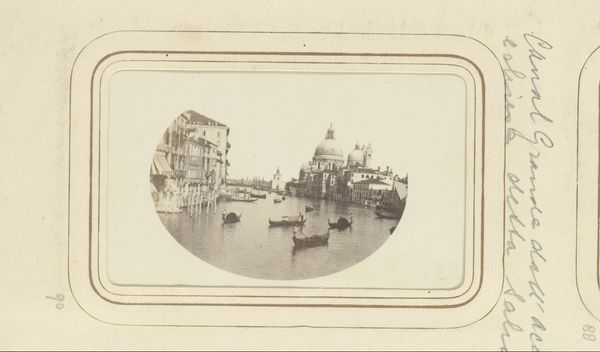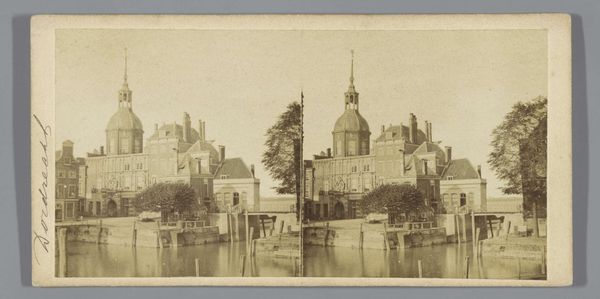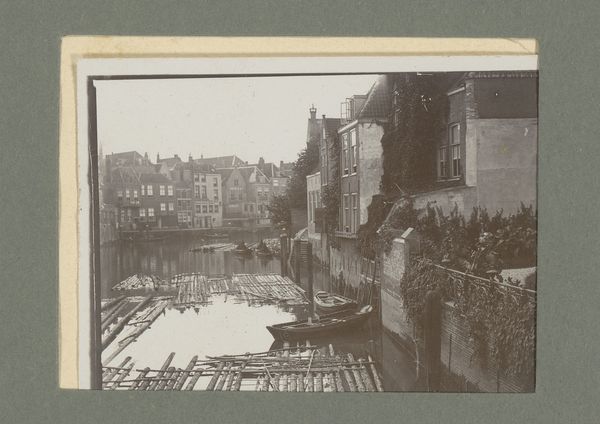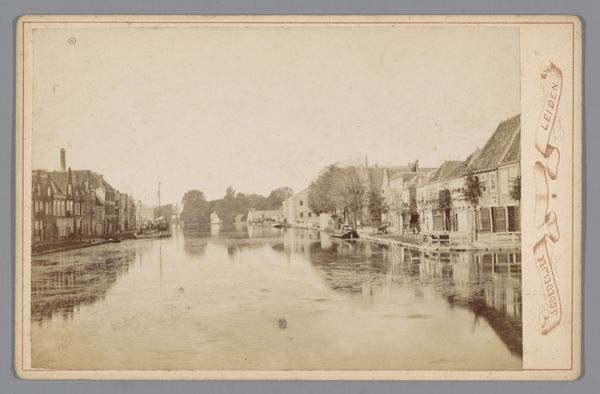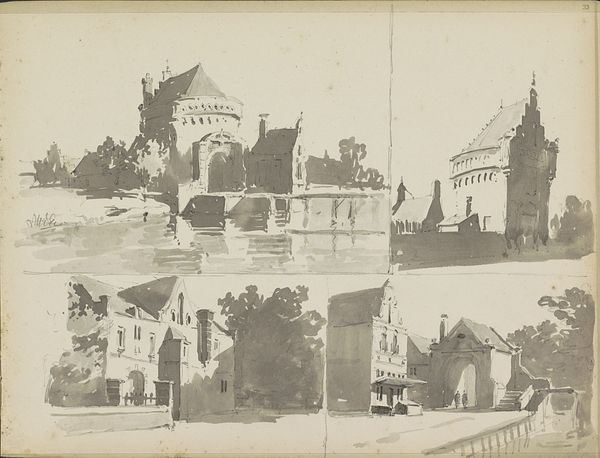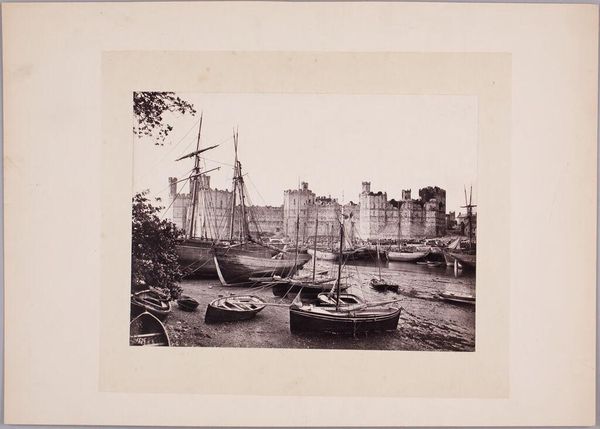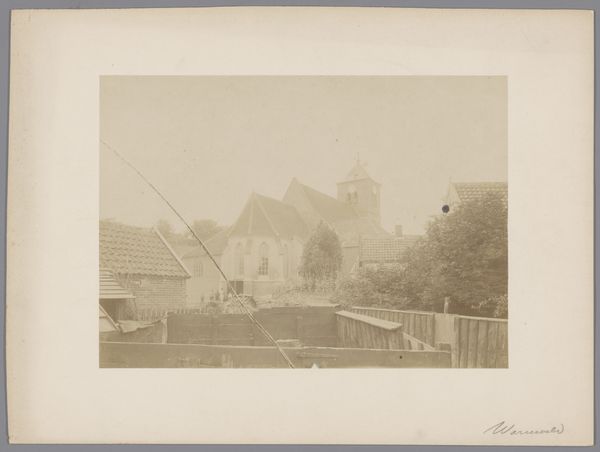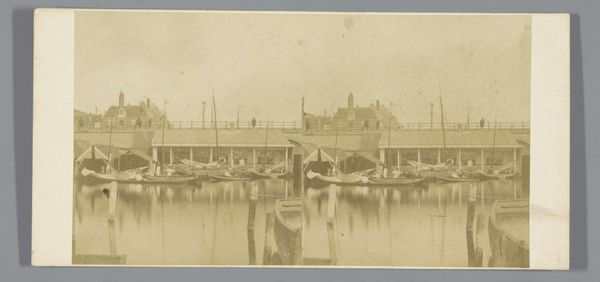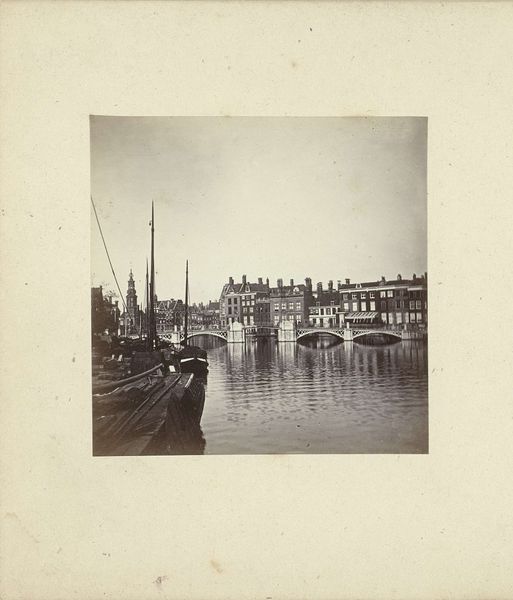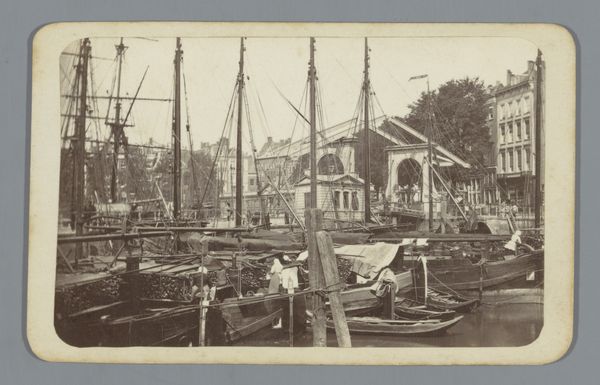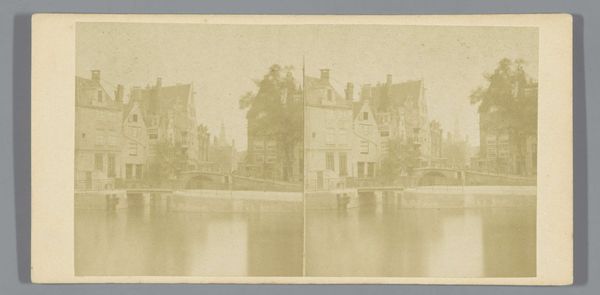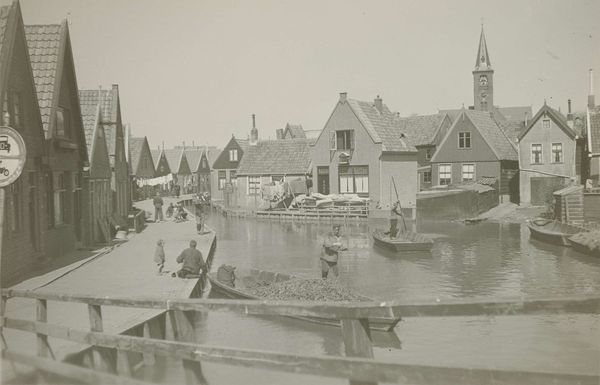
Dimensions: height 56 mm, width 85 mm, height 63 mm, width 103 mm
Copyright: Rijks Museum: Open Domain
Editor: Here we have "View of the Waag on the Nieuwmarkt in Amsterdam" by Andries Jager, likely taken between 1860 and 1890. It appears to be a gelatin silver print, and I’m struck by the stillness captured here, the quiet pulse of city life in the late 19th century. What catches your eye about this photograph? Curator: The photograph offers a glimpse into Amsterdam's evolving urban landscape. Notice how the Waag, originally a medieval gate and later a weigh house, dominates the composition. It served a crucial function in regulating trade, a symbol of civic power. How do you think photography, as a relatively new medium, impacted the representation of urban centers like Amsterdam at that time? Editor: I imagine photography offered a new kind of objective realism, quite different from idealized paintings. People could see the city as it truly was. Curator: Precisely. But remember that photography wasn't entirely objective. Choices were made about composition, exposure, and what to include or exclude. Consider the presence of the water and the boat; it brings a sense of old Amsterdam. The burgeoning of Amsterdam is also notable, what do you make of the people included? Editor: It seems like they are minding their own business, interacting casually with the commerce going on here. They lend the image scale, and imbue this sense of quiet, everyday reality that maybe was hard to capture before photography. Curator: It’s important to consider that photographic prints like this were increasingly accessible, allowing a broader audience to consume and interpret images of their cities. How does seeing the Waag in this photograph make you feel differently compared to, say, reading about it in a history book? Editor: It feels more immediate, more relatable somehow. Like stepping back in time. Curator: It shows the role photography played in shaping public memory and creating a visual record of Amsterdam’s transformation during a period of immense social and economic change. Editor: This has made me appreciate how photography in this period served not just as documentation, but as a force in shaping how people perceived their cities. Thanks for illuminating all of this! Curator: Likewise! Considering the context around art always brings forth exciting new observations.
Comments
No comments
Be the first to comment and join the conversation on the ultimate creative platform.
